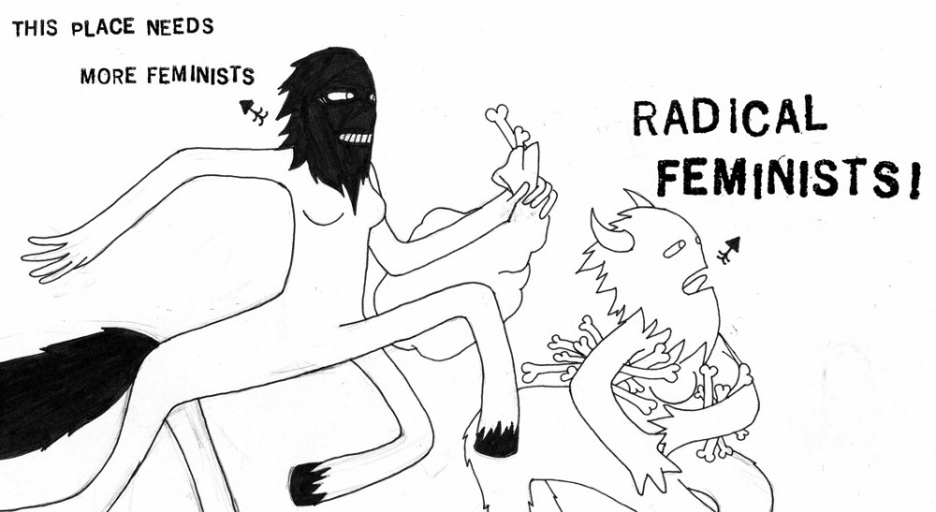Image by Edie Fake
As the child of a brown immigrant single mother, residing in a white suburban neighborhood, I was eager to find a way out of the racial caricatures that bred and hailed me, but which could not know me. These caricatures were personified in the figure of my late maternal grandmother. She moved from Iran to the United States when I was three years old to care for me, but she never assimilated. She wore hijab and could say only two sentences in English: “Nobody home, call back” and “I love you.” I remember the shame of taking her hand each morning on the way to school as classmates stared at her hijab and whispered. Mostly, I remember the white gaze of their parents, which wrote my grandmother (and me, as her kin) into being not as an agent with the power to affect history, but as an artifact of history. I intuited even then that their gaze made me a problem for time.
I was just beginning to understand how their caricatures atavistically hailed me when, one day in kindergarten, my five-year-old neighbor — a nice (enough) white girl named Megan — gave me an ultimatum. She and the committee of mean girls she commanded would thereafter extend their friendship to me on the condition that I stop speaking ‘that language’ and dissociate from my grandmother. Their racism, shrouded in friendship, was amplified by taunts from peers who called me “it” and “monkey” on the playgrounds of my youth. Desperate for a little whiteness — for a little humanness — in my life, I diligently worked to effect those changes that I could. For two days and nights, I turned away my grandmother — my mamanjoon — when she held me, fed me, bathed me, loved me. I will never forgive myself for this.
Mamanjoon (2014)
My scholarship and teaching seek to understand why the pull to betray the only person who unconditionally, consistently, selflessly, and wholly loved me was so strong that I could not deny it. As the darkest, hairiest kid in a white neighborhood, the nouns “it” and “monkey” hailed me; so much so that I did not recognize myself the first time a classmate used “she/her” (i.e., human) pronouns to describe me. Theirs were not exceptional taunts but rather, matters of fact, expressed also or especially by other children of color who were desperate to pass the buck of their ontological anxieties to a more plausible Other. It was our presumed location in the bush, as a primitive and primordial people, that likewise rendered us “it” and “monkey.” But it was I, as the darkest and hairiest among them, who would wear the face of that inhumanism. It wasn’t until the fourth grade, when a black student enrolled at the school, that I and other non-black children of color would no longer feel ourselves as beasts of burden. That we could unload this burden but they could not, I later learned, matters for how we understand sex and gender difference.
Much of the white mimicry Megan demanded of me (for example, she instructed me to dye my hair blonde so that I could be ‘beautiful’) required that I curate a specific kind of gender expression; making me believe that if I could embody white femininity, then I could also signpost my humanity. While I did not yet have the language for it, I learned at that time that gender difference is made possible by racism, which is none other than planetary speciesism. I found this language when I read Fanon’s Black Skin, White Masks (1952) in conversation with black femme(inist)s who taught me that my human recognition, contingent (Megan also taught me) on my gender performance, is determined by Euro-Enlightenment humanism’s social and political constructions of time, which locate people of color — especially the “black African” (Hegel) — in a time before the onset of human ‘civilization.’
I came to theory, as my late friend and mentor bell hooks explains, “because I was hurting.” bell writes, “I came to theory desperate, wanting to comprehend—to grasp what was happening around and within me. Most importantly, I wanted to make the hurt go away.” The formative, childhood experience of knowing and feeling myself as Other, specifically, as an ungendered ‘it’ and ‘monkey,’ and the later experience of transcending this inhumanism (as a non-black person of color) through curated gender performance, animates the anti-humanist feminism characteristic of my teaching and scholarship today.

